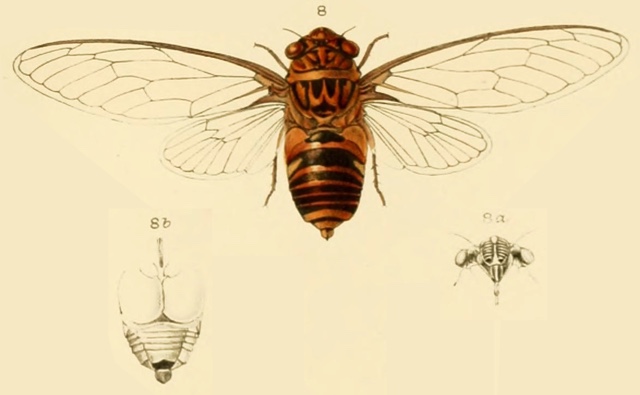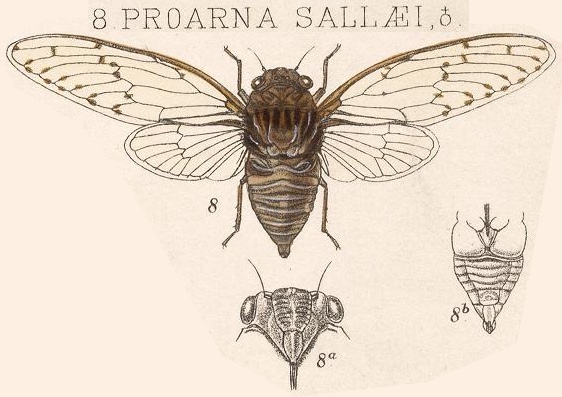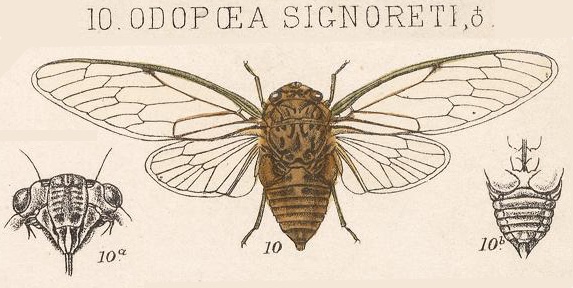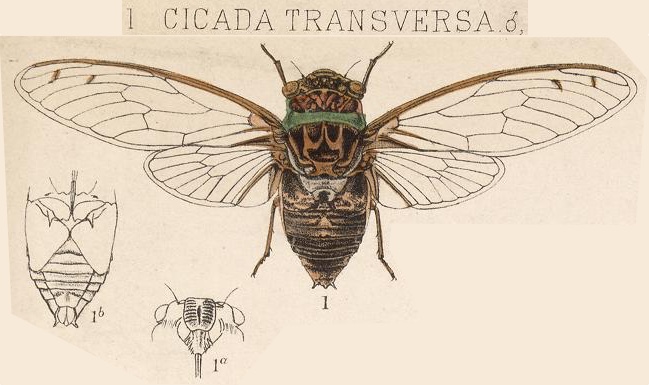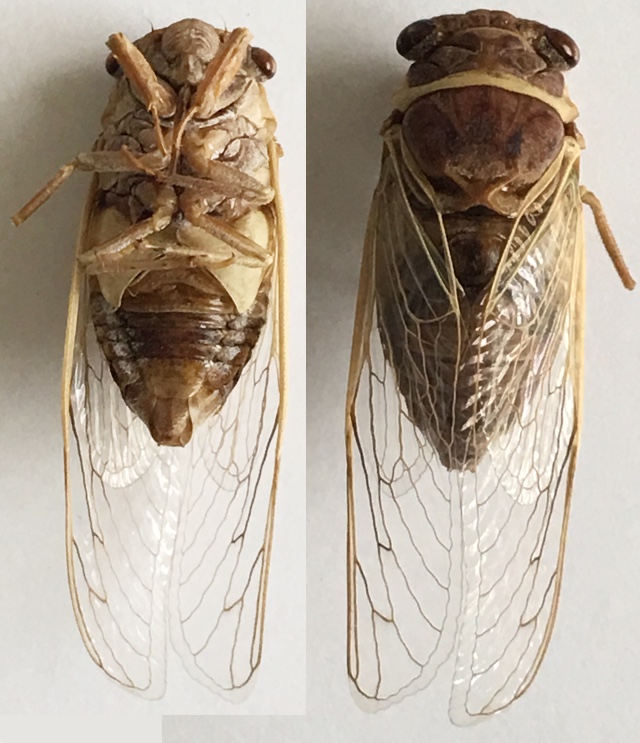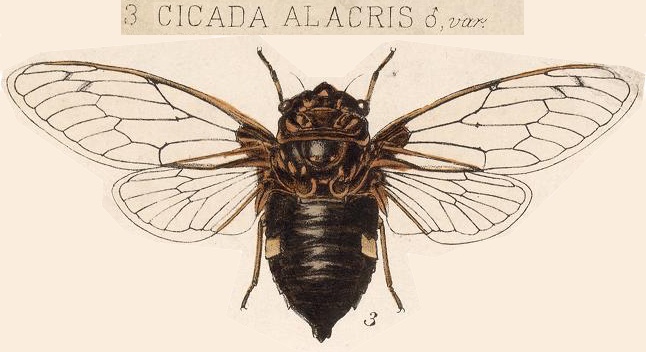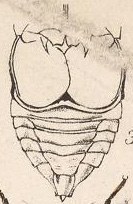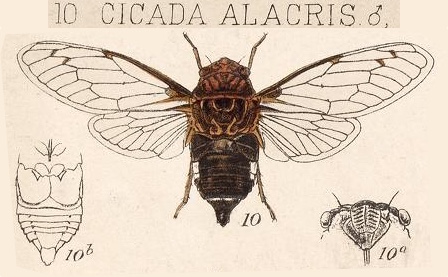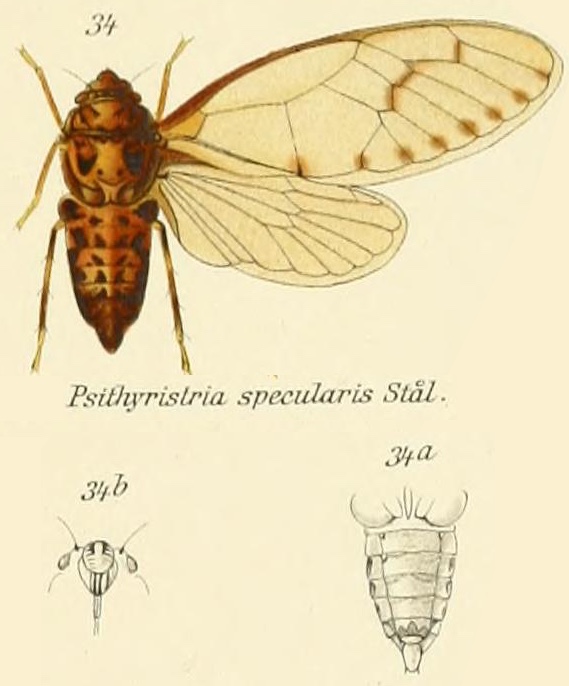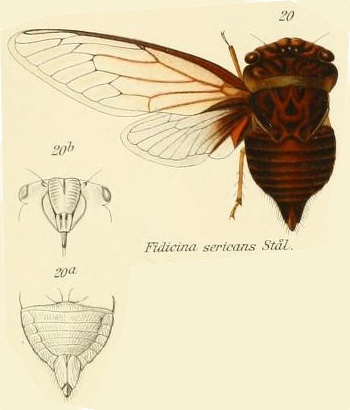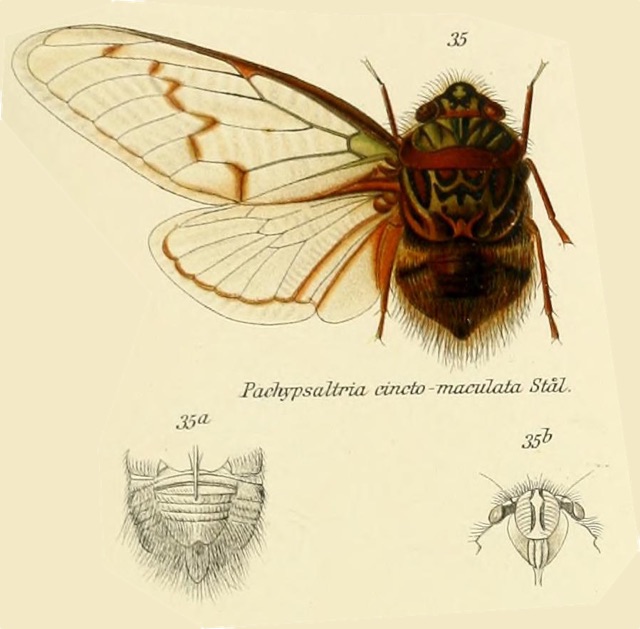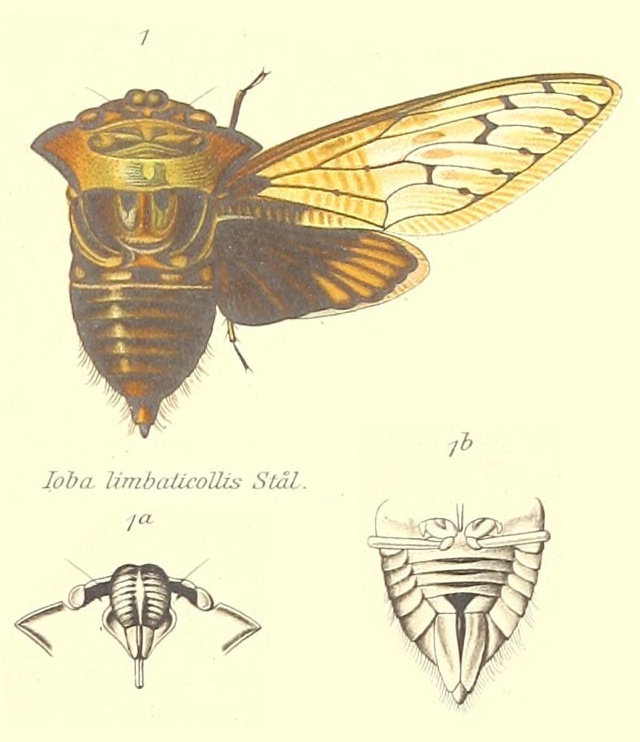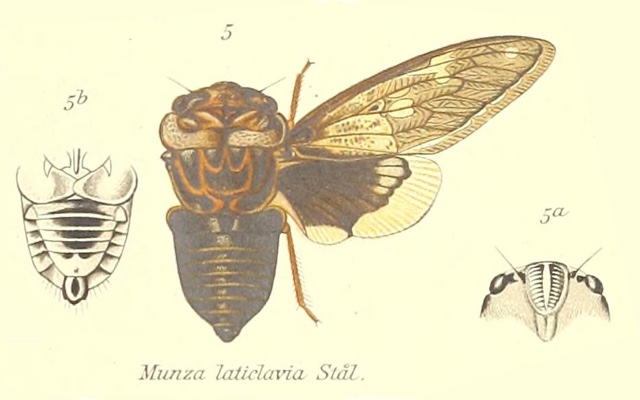Platypleura coelebs Stål, 1863, is a cicada found in India and China.
Platypleura coelebs was formerly known as Poecilopsaltria coelebs.
Scientific classification:
Family: Cicadidae
Subfamily: Cicadinae
Tribe: Platypleurini
Genus: Platypleura
Species: Platypleura coelebs Stål, 1863
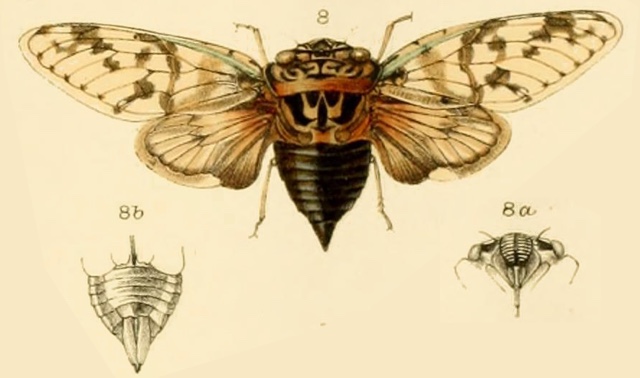
Species specimen description from A Monograph of Oriental Cicadas by W.L. Distant:
Head ochraceous; front, excluding a central spot, margins of vertex between front and eyes, and a transverse fascia between the eyes black; pronotum pale castaneous, the posterior and lateral margins ochraceous; mesonotum castaneous, with four large obconical black spots on anterior margin, the central two smallest, a central discal elongate black spot and a small black spot in front of each anterior angle of the basal cruciform elevation; abdomen black, the tympanal coverings, and the posterior segmental margins ochraceous. Head beneath, sternum, legs, rostrum and opercula ochraceous; a transverse fascia between the eyes — enclosing a pale spot on face — inner margins of eyes, posterior margin of face and apex of rostrum black: abdomen beneath castaneous, with the posterior segmental margins and the apes ochraceous.
Tegmina with about the basal half creamy opaque shaded with pale fuscous, and more or less outwardly defined by an indistinct curved pale fuscous fascia, remaining area hyaline, costal membrane and venation dark ochraceous, the transverse veins at the bases of the second, third, fourth, fifth and seventh apical areas slightly infuscated; wings stramineous for about two-thirds their area from base, this coloration outwardly margined with fuscous, remaining area pale hyaline, the venation dark ochraceous.
The rostrum extends a little beyond the inner angles of the opercula, which are somewhat well separated.
Long. excl. tegm. 22 to 23 millim. Exp. tegm. 64 to 68 millim. Exp. pronot. angl. 11 millim.
References:
- The illustration, description and location information comes from A Monograph of Oriental Cicadas by W. L. Distant. 1889-1892. Read it on the Biodiversity Heritage Library website.
- Species name information comes from Allen Sanborn’s Catalogue of the Cicadoidea (Hemiptera: Auchenorrhyncha).
